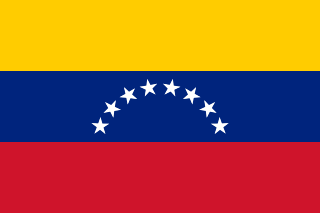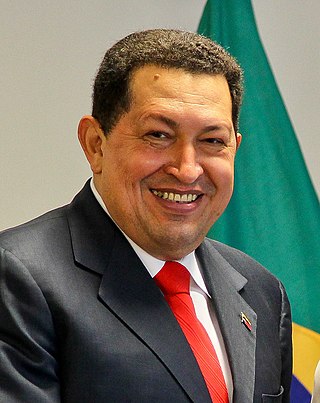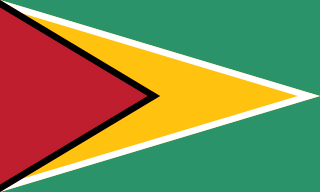
Venezuela, officially the Bolivarian Republic of Venezuela, is a country on the northern coast of South America, consisting of a continental landmass and many islands and islets in the Caribbean Sea. Venezuela comprises an area of 916,445 km2 (353,841 sq mi), and its population was estimated at 29 million in 2022. The capital and largest urban agglomeration is the city of Caracas.

Hugo Rafael Chávez Frías was a Venezuelan politician and military officer who served as president of Venezuela from 1999 until his death in 2013, except for a brief period of forty-seven hours in 2002. Chávez was also leader of the Fifth Republic Movement political party from its foundation in 1997 until 2007, when it merged with several other parties to form the United Socialist Party of Venezuela (PSUV), which he led until 2012.

Jean-Baptiste Pierre Antoine de Monet, chevalier de Lamarck, often known simply as Lamarck, was a French naturalist, biologist, academic, and soldier. He was an early proponent of the idea that biological evolution occurred and proceeded in accordance with natural laws.

Guayana Esequiba, also called Esequibo or Essequibo, is a disputed territory of 159,500 km2 (61,600 sq mi) west of the Essequibo River. The territory is claimed by Venezuela but it is controlled by Guyana, based on the 1899 Paris Arbitral Award. The boundary dispute was inherited from the colonial powers and has persisted following the independence of Venezuela and Guyana.

Nicolás Maduro Moros is a Venezuelan politician who has served as the president of Venezuela since 2013.

Ryssota is a genus of air-breathing land snails, terrestrial pulmonate gastropod mollusks in the family Chronidae.

Wallenia is a genus of flowering plants in the family Primulaceae endemic to the West Indies.
Cyclothyris is an extinct genus of brachiopods from the Cretaceous of Africa, Asia, Europe, and North America.

Guyana, officially the Co-operative Republic of Guyana, is a country on the northern mainland of South America. Guyana is an indigenous word which means "Land of Many Waters". The capital city is Georgetown. Guyana is bordered by the Atlantic Ocean to the north, Brazil to the south and southwest, Venezuela to the west, and Suriname to the east. With a land area of 215,000 km2 (83,000 sq mi), Guyana is the third-smallest sovereign state by area in mainland South America after Uruguay and Suriname, and is the second-least populous sovereign state in South America after Suriname; it is also one of the least densely populated countries on Earth. It has a wide variety of natural habitats and very high biodiversity.
Nils Heribert-Nilsson was a Swedish botanist and geneticist.

Eunaticina is a genus of predatory sea snails, marine gastropod mollusks in the subfamily Sininae of the family Naticidae, the moon snails.

Diaethria clymena, the Cramer's eighty-eight, is a species of butterfly of the family Nymphalidae. It is found from Mexico to Peru and Brazil. It was discovered to science by Pieter Cramer, in a fascicle of De uitlandsche Kapellen, 1775.

Trema lamarckianum, Lamarck's trema, West Indian nettle tree, or pain-in-the-back is a plant species in the genus Trema of the family Cannabaceae. It is a small evergreen shrub that is native of Florida and the West Indies. It has several common names such as pain-in-back, cabrilla and Lamarck trema. It is 6 m tall growing all year.
Karel Bernard Boedijn was a Dutch botanist and mycologist. Born in Amsterdam, he graduated with a PhD from the University of Amsterdam in 1925; his thesis was titled "Der Zusammenhang zwischen den Chromosomen und Mutationen bei Oenothera lamarckiana".

Doryssa is a genus of freshwater snails which have an operculum, aquatic gastropod mollusks in the family Pachychilidae.

Pamphagidae is a family of grasshoppers belonging to the superfamily Acridoidea. The species in this family can be found in Africa, Europe and Asia.

Lamarckiana is a genus of grasshoppers in the family Pamphagidae. There are about five described species in Lamarckiana, found in southern and eastern Africa.

Porthetinae is a subfamily of grasshopers, with genus found in Africa and Asia (Arabia).















